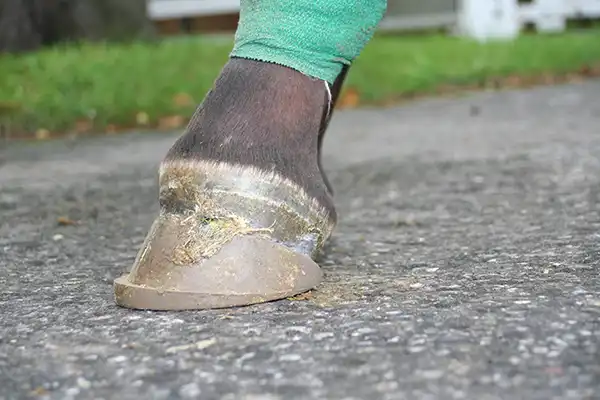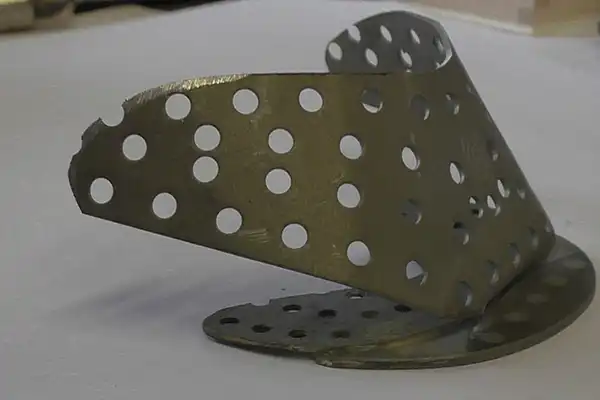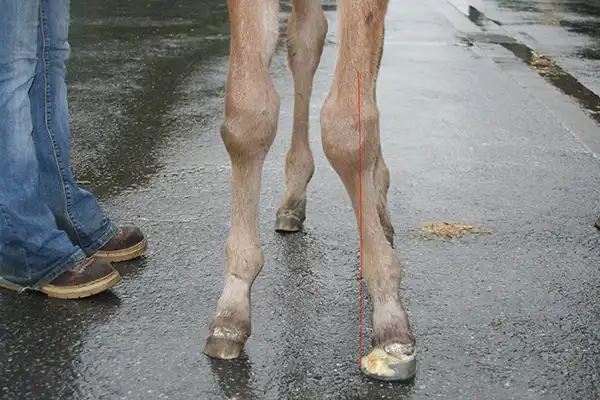Foal Care – Correction of Hoof Position: Barefoot and with Glue-on Shoes
Correcting the hooves of foals every 4 to 5 weeks is certainly not an unnecessary luxury, but rather an investment in the future of the horse. It also allows for timely intervention if there are any issues with hoof positioning or misalignment.
Start brushing your foal playfully in the first 1 to 3 weeks of its life. Prepare your foal for hoof trimming from the very first days of life and ensure that the trimming takes place in a calm and relaxed atmosphere.
Movement and Prevention of Hoof Deformities in Foals
Even with severe deformities, it is important to ensure controlled movement on hard ground during the first weeks after birth. This is because muscle and tendon tension manifest in the first 1.5 to 2 weeks.
If anomalies are present, you should consult a veterinarian and hoof expert as soon as possible.
However, if foals with such deformities are not properly cared for, the opposite occurs: tendons and muscles adjust to the wrong tension, worsening the problems.
It is recommended to let your foal run outside day and night from birth so it can move continuously, while also having the opportunity to shelter and lie dry.
Make sure your foal can walk on various types of ground, especially harder surfaces, so that the hooves receive adequate counter-pressure.
Let your foal have its hooves trimmed at regular intervals (every 4 to 5 weeks) starting from the second or third month of life, if necessary
Hoof Deformities in Foals
Some deformities occur more frequently in foals. These are often caused by problems with the joints, although in some cases, the hoof itself is the source of the issue. Below are the most common deformities, particularly those affecting the lower limbs, so they can be identified and treated quickly.
Digital Hyperflexion
Also referred to as flexor tendon laxity in foals is a deformity often caused by problems in the fetlock joint. When the foal stands or walks, the fetlock joint bends down toward the ground. The cause of this deformity is weakness in the flexor muscles and the fetlock support system. Often, it can be corrected by allowing the foal to walk on flat, hard ground, and strengthening the flexor apparatus can resolve the issue without any interventions. After 14 days, this weakness should be balanced out. However, the veterinarian should monitor the development of the limb positioning to intervene if significant problems arise.
Contracted Hoof
The contracted hoof is a natural physiological condition that prevents the hooves from injuring the birth canal, making the hooves narrower and surrounded by soft foal tissue. This deformity will not develop into a normal hoof if the foal receives too little movement or inadequate hoof care after birth. The hooves' heels will not widen properly, preventing the development of the frog and bulb. As a result, the hooves’ heel bulbs may stay too straight or even shift inward. It is crucial to consult an experienced farrier and veterinarian to avoid irreversible hoof misalignment.
Club Foot
Club foot can have various causes and is a common deformity. It is easily recognized (hoof angle greater than 60°), as the hoof is much blunter than a healthy hoof, and the fetlock axis is often broken forward. It can occur on both the front and hind legs. Club foot can be congenital or a result of incorrect loading (grass foot) or an injury. If it is not congenital, it typically develops between 3 to 6 months after birth due to rapid growth spurts or improper rearing and care.
The foal's hoof may have remained too narrow for its age, and the heels have grown too high. This prevents the frog from receiving the necessary pressure from the ground, causing it to remain underdeveloped. The cause is a relative shortening of the flexor tendon. This shortening occurs when the bone of the cannon bone grows longer than the tendon, pulling the supporting ligaments and causing the flexor muscle to stay in constant contraction. The hoof joint is over-flexed, leading to misalignment and abnormal hoof growth. Without treatment, joint inflammation can occur. Treatment by a veterinarian (pain reduction) and a knowledgeable farrier is essential to relieve the hoof and take necessary steps to save the hoof.
Contracted Tendon Foot
Contracted tendon foot is like club foot, but in this case, it is an abnormal flexion of the fetlock joint, whereas in club foot, the hoof joint is abnormally flexed. The cause of the flexion in the fetlock joint is a shortening of the superficial flexor tendon and the associated flexor muscle. There can be several reasons for contracted tendon foot. Experts distinguish between a congenital defect, where the superficial flexor tendon is shortened, and an acquired injury. The congenital defect can be caused by the foal's poor lying position during pregnancy or by a mineral deficiency. To prevent this, it is recommended that the pregnant mare be examined by a veterinarian to evaluate the foal's position in the womb and to recommend a balanced diet.
This deformity can also be linked to the foal's growth and may develop later, between 9 and 18 months. Fast-growing horse breeds, such as Warmbloods and Thoroughbreds, are particularly affected. In some cases, a foal may initially develop club foot and later transition into contracted tendon foot. Surgical intervention, where the two supporting ligaments are severed, is sometimes necessary. However, even after such an operation, these horses often remain unusable for normal work throughout their lives.
Axial Deformities
Axial deformities can also occur in young foals, with potentially serious consequences for their future. Most axial deformities occur in the front limbs, but there are also cases where the back limbs are affected (foals may be born with one leg in X-shape and the other in O-shape). The most common cause of axial deformity is the fetlock joint, followed by the carpal or tarsal joints. This can result in the longitudinal axis of the limb being rotated either inward (X-legs) or outward (O-legs). If this occurs, it is extremely important to consult a veterinarian immediately. Only with early treatment is there a chance to correct the axial deformity, otherwise, the foal will not be usable as a riding horse.
Time Window
The deformity of the fetlock joint can be corrected within a relatively short time window (epiphyseal closure between 4 to 6 months). For the carpal or tarsal joint, this window is between 14 to 18 months.
Products
These products are available to improve the Position of the limbs and hooves in foals.
Products like Craftwork Ultra Fast glue everything in the shortest time possible. They are particularly popular for applying Dallmer and Michael Puhl foal shoes. The use of these two-component adhesives requires a handheld device and mixing nozzles. Please follow the application instructions carefully.




